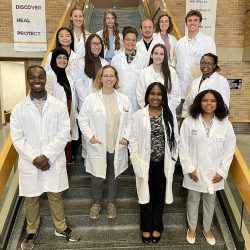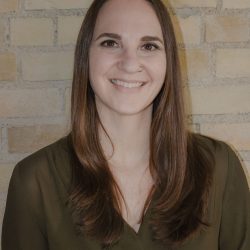March is Disability Awareness Month. The reasons a person may be differently-abled are numerous, as are their lived experiences and contributions to their career fields and communities. One alumna of the MSU College of Veterinary Medicine shares her thoughts and experiences below.
Dr. Kim Dodge, MSU College of Veterinary Medicine Alumna

About: Kim Dodge earned her bachelor’s (zoology) and doctor of veterinary medicine degrees from Michigan State University. While in undergraduate school, she had the privilege of participating in Vetward Bound, a program designed to provide exposure to various facets of veterinary medicine to undergraduate students from underrepresented backgrounds. The Vetward Bound staff and the experiences she had within the program were instrumental in her gaining admission to and surviving veterinary school by providing not only academic and personal support, but a familiarity with situations she would later encounter in vet school.
During and after veterinary school, Kim worked with other deaf/hard of hearing medical professionals to form the Association of Medical Professionals with Hearing Losses, and was a board member for several years. Kim currently practices small animal emergency medicine in an emergency/specialty hospital in Rochester, NY.
How can the veterinary community be more inclusive of their students and peers who are differently abled? "One of the best things about veterinary medicine is our ability to be creative and think outside the box when working with our patients. It is a daily challenge to adjust our plans according to anatomical, physiological, and behavioral differences exhibited by our patients. This adaptability helps us toward working with a diverse group of people, perhaps more so than our human medicine counterparts. But we are not immune to tunnel vision. The biggest thing is to avoid dismissing someone’s ability to accomplish something based on a preconceived notion of how they function in the world vs how everybody else functions. There is almost always more than one way to approach something besides the typical 'tried and true' methods, and as technology advances, there are more and more options available for work-arounds and new methods. For example, as valuable as auscultation via stethoscope can be, we have for years used radiographs to augment our findings, and many practitioners are now learning to use ultrasound to quickly detect pleural effusion, pulmonary edema, and more. If you have a bit of time to help brainstorm and troubleshoot, you can make a big difference in somebody’s career."



